Medieval Marvels of Mexico City
Explore the medieval charm of Mexico City on this free walking tour, uncovering ancient temples, stunning architecture, and rich history around every corner.
Time
3 Hours
Stops
9 Places
Distance
2.2 km
Templo Mayor
Begin your tour at the Templo Mayor, the main temple of the ancient Aztec city of Tenochtitlan, offering a glimpse into the medieval past of Mexico City.
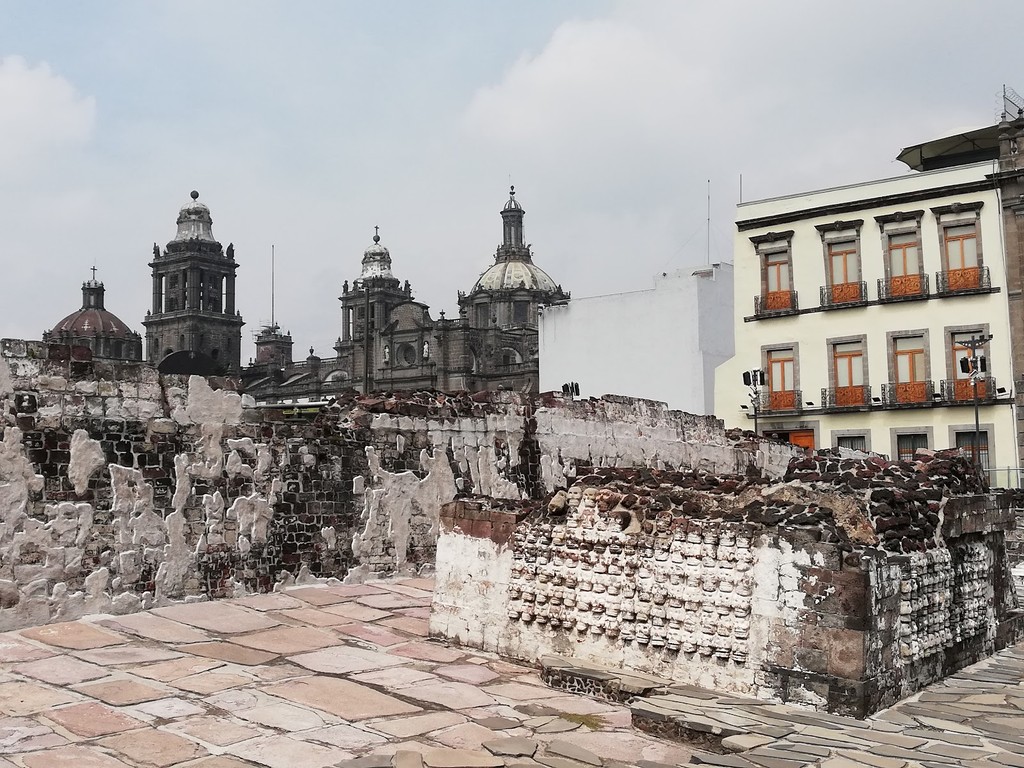
Templo Mayor (Source: Google Maps)
The Templo Mayor was the main temple of Tenochtitlan, the ancient Aztec capital. Constructed in the 14th century, it was dedicated to the gods Huitzilopochtli and Tlaloc. The site features impressive ruins, with temples built upon temples as the Aztecs expanded their civilization. The temple complex was a hub of religious activity and human sacrifice, reflecting the Aztec's deep spiritual beliefs. Excavations have revealed numerous artifacts, including sculptures and offerings, which provide insight into the Aztec culture and their connection to the divine. Today, the Templo Mayor serves as a significant archaeological site and a museum, allowing visitors to immerse themselves in the rich history of the Aztecs and their medieval legacy.
Palacio Nacional
Continue to the Palacio Nacional, which houses beautiful murals by Diego Rivera and is steeped in the history and politics of Mexico.
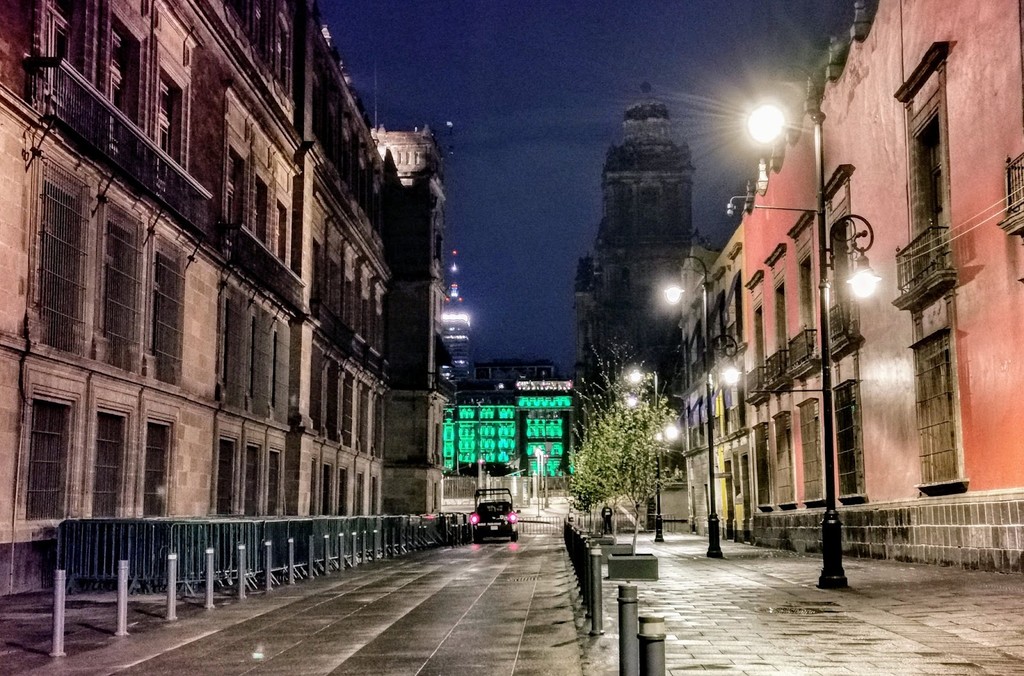
Palacio Nacional (Source: Google Maps)
The Palacio Nacional, or National Palace, is an iconic building that has served as the seat of power in Mexico since the Aztec era. Originally built atop the ruins of Moctezuma II's palace, it showcases a blend of architectural styles, including colonial and neoclassical. The interior is adorned with impressive murals by Diego Rivera, depicting Mexican history from ancient times to the Mexican Revolution. The palace is not only a political center but also a cultural landmark, housing significant artifacts and hosting important events. Its grand courtyards and gardens offer a glimpse into Mexico's rich heritage, making it a must-visit for anyone interested in the medieval influences that shaped the nation.
Metropolitan Cathedral
Just a short walk away, the Metropolitan Cathedral is a stunning example of colonial architecture built over several centuries, incorporating medieval elements in its design.
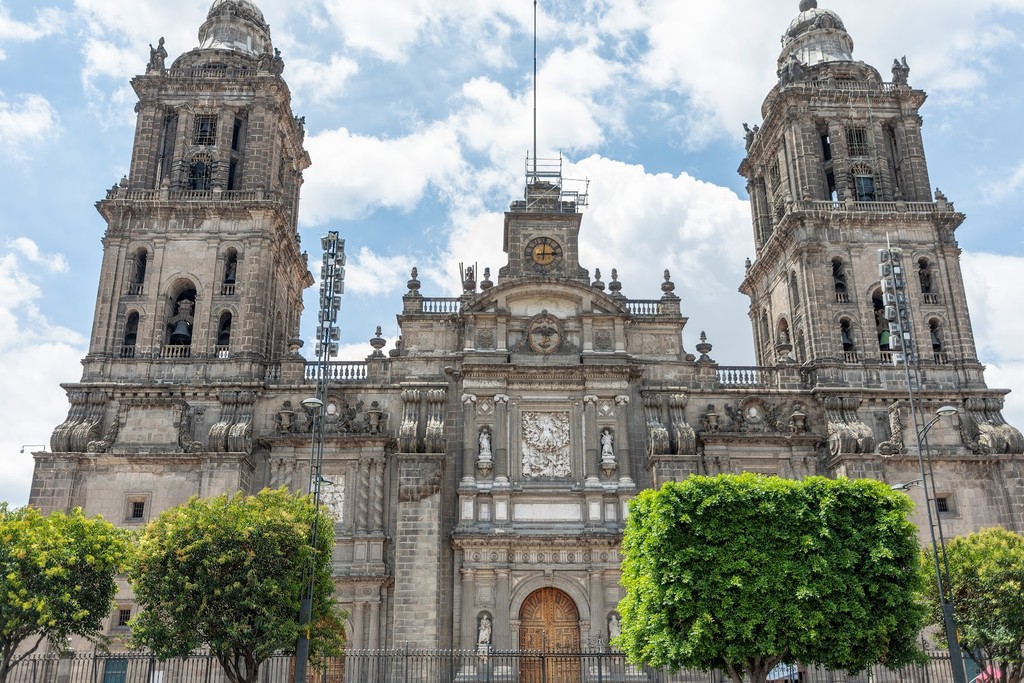
Metropolitan Cathedral (Source: Google Maps)
The Metropolitan Cathedral is a stunning representation of colonial architecture and is the largest cathedral in Latin America. Built over 250 years, it features a blend of architectural styles, including Gothic, Baroque, and Neoclassical elements. The cathedral was constructed atop the ruins of an Aztec temple, symbolizing the merging of indigenous and Spanish cultures. Its majestic façade, adorned with intricate carvings, and its impressive bell towers dominate the Zócalo, Mexico City's main square. Inside, visitors can admire beautiful altarpieces, chapels, and religious art, showcasing the cathedral's historical significance. It serves as a vital center of Catholicism in Mexico and a testament to the medieval architectural influences that shaped the nation's religious landscape.
Sanborns Café (within Casa de los Azulejos)
Take a break at Sanborns Café located inside Casa de los Azulejos, known for its traditional Mexican dishes and elegant interior.
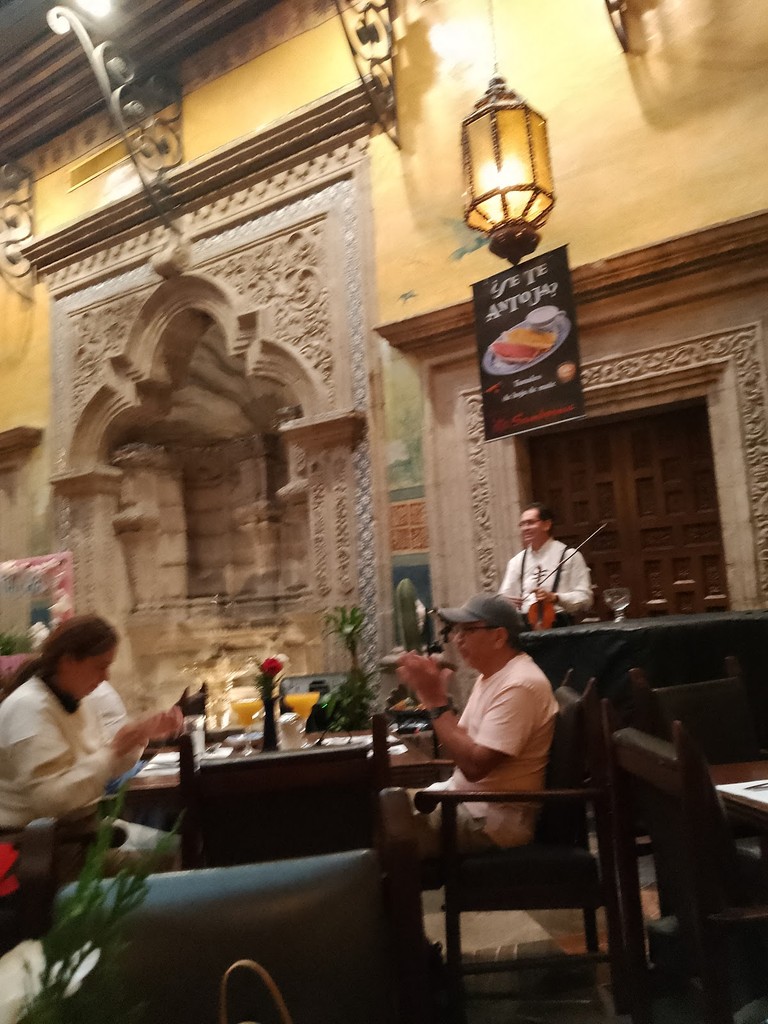
Sanborns Café (within Casa de los Azulejos) (Source: Google Maps)
Casa de los Azulejos
This unique 18th-century palace, adorned with blue and white tiles, is a beautiful example of colonial architecture and offers a glimpse into the city's artistic heritage.
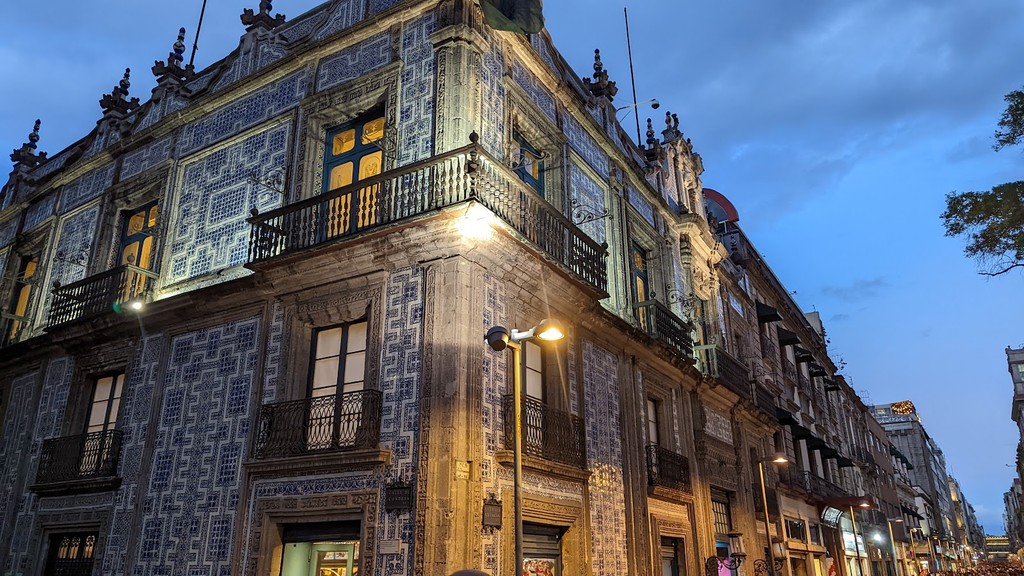
Casa de los Azulejos (Source: Google Maps)
Casa de los Azulejos, or House of Tiles, is an 18th-century palace renowned for its stunning blue and white tiles that adorn its façade. Originally built as a private residence, it reflects the opulence of colonial architecture and is a prime example of the artistic heritage of Mexico City. The tiles were imported from Europe and are a testament to the cultural exchange between the Old World and the New. Inside, visitors can find beautiful courtyards and intricate murals that enhance the building's charm. Today, Casa de los Azulejos houses a Sanborns café, allowing guests to enjoy traditional Mexican cuisine in a historic setting. Its unique architectural design and rich history make it a significant landmark that illustrates the medieval influences on Mexican art and culture.
Torre Latinoamericana
Head to Torre Latinoamericana, where you can enjoy panoramic views of Mexico City from the observation deck, giving you a broader perspective of the city's layout.
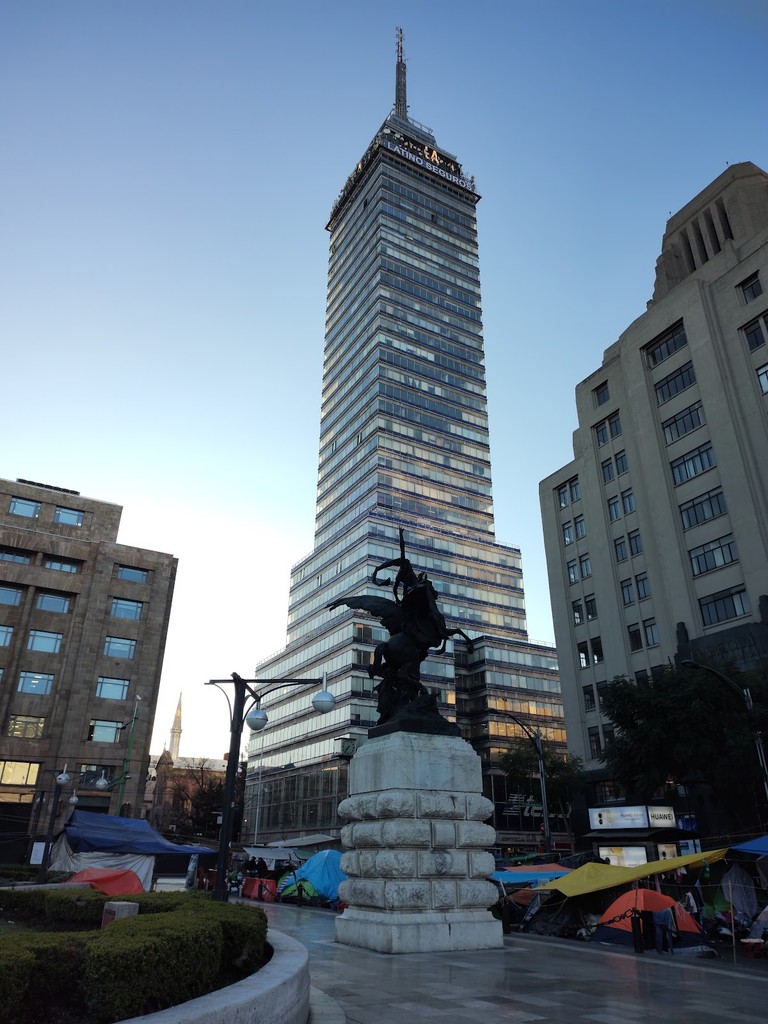
Torre Latinoamericana (Source: Google Maps)
The Torre Latinoamericana is one of Mexico City's most recognizable landmarks, standing at 204 meters tall. Completed in 1956, it was once the tallest building in Latin America and remains an architectural marvel. The tower features a modernist design, but its construction was influenced by the medieval architectural style prevalent in earlier buildings. Visitors can access the observation deck for panoramic views of the sprawling cityscape, providing a unique perspective of Mexico City's layout and historical sites. The Torre Latinoamericana symbolizes resilience, having withstood several earthquakes, and serves as a reminder of the city's rich history and cultural evolution. Its significance as a viewpoint and architectural icon makes it a must-see destination for those exploring the medieval roots of Mexico City.
Palacio de Bellas Artes
Visit the Palacio de Bellas Artes, a cultural icon of Mexico City, showcasing performances and exhibitions in a stunning art nouveau and art deco building.
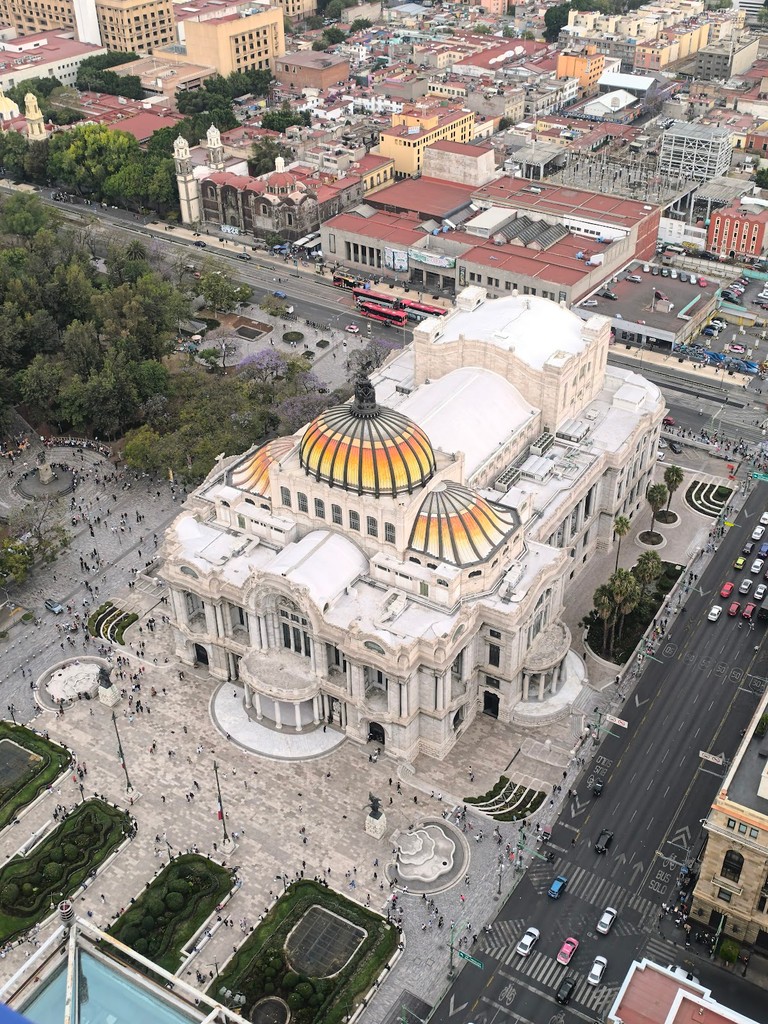
Palacio de Bellas Artes (Source: Google Maps)
The Palacio de Bellas Artes is a cultural icon of Mexico City, showcasing the country’s artistic heritage. Completed in 1934, it features a stunning blend of Art Nouveau and Art Deco architectural styles, with a grand white marble façade and a striking glass dome. The building is home to the National Museum of Architecture and hosts various performances, including opera, ballet, and concerts. Inside, visitors can admire murals by renowned artists, including Diego Rivera and David Alfaro Siqueiros, which reflect Mexico's revolutionary spirit and cultural identity. The palace's opulent interiors and rich cultural offerings make it a central hub for the arts in Mexico City. Its architectural beauty and artistic significance highlight the medieval influences that continue to inspire contemporary Mexican culture.
Alameda Central
Stroll through Alameda Central, Mexico City's oldest public park, offering a refreshing pause amidst beautiful fountains and sculptures.
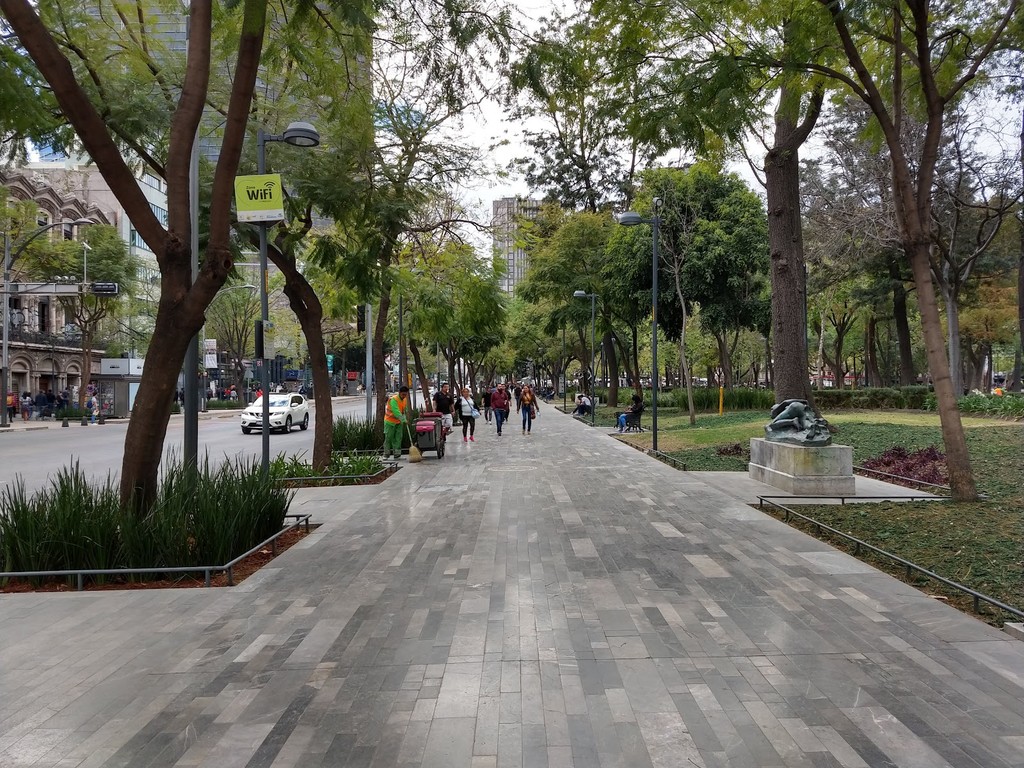
Alameda Central (Source: Google Maps)
Alameda Central is Mexico City's oldest public park, dating back to the 16th century. Originally a place for indigenous ceremonies, it has evolved into a vibrant urban oasis. The park features beautiful fountains, sculptures, and walking paths, providing a serene escape from the bustling city. Surrounded by historical landmarks, including the Palacio de Bellas Artes, it serves as a cultural and recreational space for locals and tourists alike. The park is home to various events and exhibitions, celebrating Mexico's rich heritage. Its historical significance and lush greenery make it a beloved gathering place, reflecting the medieval influences that shaped the city's landscape and community.
Museo Franz Mayer
End your tour at the Museo Franz Mayer, which features a collection of decorative arts and offers insights into the artistic history of Mexico, housed in a former hospital with medieval influences.
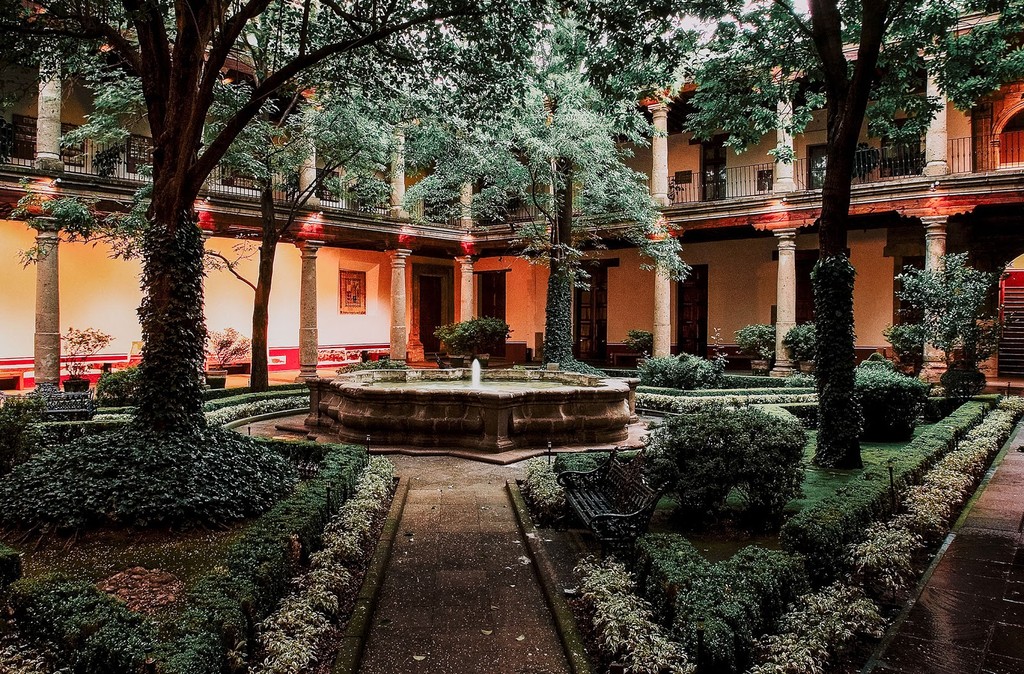
Museo Franz Mayer (Source: Google Maps)
The Museo Franz Mayer is located in a former hospital, showcasing a remarkable collection of decorative arts and design. Established in 2000, it features over 20,000 pieces, including furniture, ceramics, and textiles, representing various artistic styles throughout history. The building itself exhibits medieval influences in its architecture, offering a glimpse into the artistic evolution of Mexico. The museum hosts temporary exhibitions and educational programs, making it a significant cultural institution in the city. Its focus on decorative arts provides insight into the craftsmanship and creativity that have shaped Mexican culture. Visitors can explore the museum's beautiful gardens, enhancing the experience of discovering Mexico's artistic history.

Your travels, your rules.
Create your own Free Walking Tours.
Set your preferences, distances and anything you want to do or see.
Completely free, no payment required.